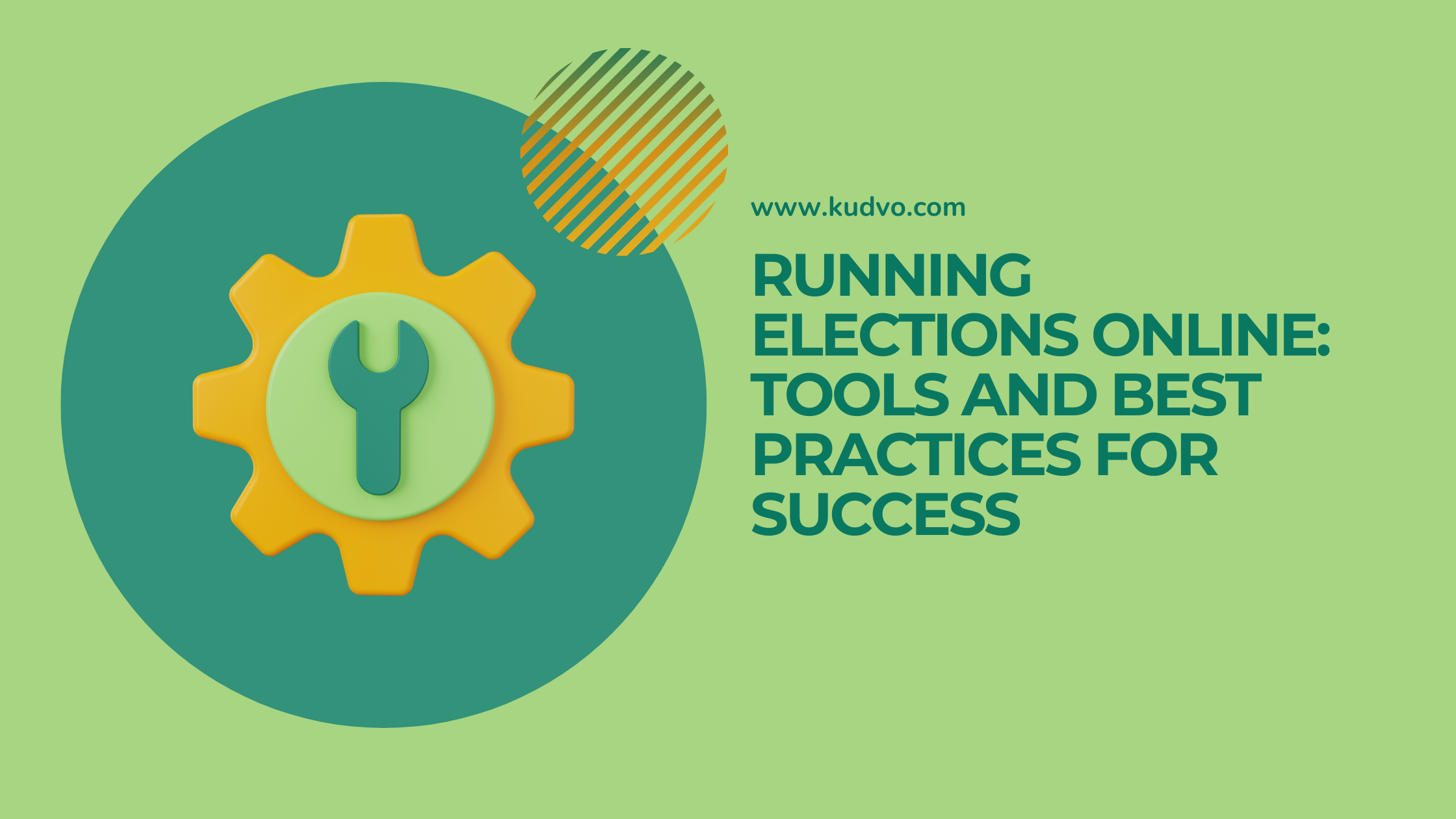Running Elections Online: Tools and Best Practices for Success
Introduction
Ever tried organizing an election and ended up drowning in paper ballots, missed deadlines, or low voter turnout?
You're not alone. Traditional elections—whether for companies, nonprofits, schools, or associations—often involve time-consuming logistics, high costs, and frustratingly low participation. Fortunately, online elections are transforming how organizations gather votes and make decisions.
In this post, we’ll walk you through the essential tools and proven best practices for running secure and successful online elections. Whether you’re managing a board vote or a member-wide election, this guide will help you streamline the process from start to finish.
Powered by Kudvo—your trusted platform for secure, simple online voting.
1. Why Go Digital? The Advantages of Online Elections
Shifting your election online comes with a host of benefits. It’s not just about convenience—it’s about improving participation, transparency, and accuracy.
Top advantages include:
Increased Voter Turnout: Members can vote from any device, anytime.
Faster Results: Votes are counted automatically, with zero manual error.
Lower Costs: Save on printing, postage, staffing, and venue rentals.
Real-Time Tracking: See voter engagement and send reminders in real-time.
Enhanced Security: Many platforms use encryption, voter authentication, and audit trails.
Example:
A nonprofit in California switched to online voting and saw a 52% increase in voter participation—all while cutting election expenses by 40%.
2. Choosing the Right Online Voting Tool
Not all voting platforms are created equal. The right tool should match your organization's needs, budget, and technical requirements.
What to look for in an online voting platform:
Security Features – encryption, voter verification, and tamper-proof results
User-Friendly Interface – easy to navigate for both admins and voters
Customizable Ballots – multiple-choice, ranked choice, or yes/no formats
Accessibility – mobile-optimized and ADA-compliant
Real-Time Reporting – instant access to turnout metrics and final results
Customer Support – reliable help when you need it most
Recommended Tool:
Kudvo checks all these boxes. It’s built specifically for secure online voting, with a sleek user interface and real-time insights that keep your elections on track.
3. Best Practices for a Successful Online Election
Running an online election involves more than just picking a platform. Planning, communication, and follow-through are key.
Follow these best practices for success:
✅ Plan Ahead
Set clear election dates and deadlines
Define voter eligibility and prepare your voter list
Draft your ballot and test it with a small group
✅ Communicate Clearly
Announce the election with key dates and voting instructions
Send multiple reminders before and during the voting period
Use email, social media, and website banners for visibility
✅ Make It Easy to Vote
Choose a tool with a simple voting interface
Ensure mobile access
Provide clear instructions and a help contact
✅ Ensure Transparency and Security
Use encrypted platforms with verified voter access
Keep an audit trail for post-election review
Announce results promptly and share a summary with voters
Tip:
Many organizations see the best turnout when they send at least two reminders and keep the voting window open for 3–5 days.
4. Common Mistakes to Avoid
Even with the best tools, some missteps can undermine your election. Here’s what to watch out for:
❌ Not testing the ballot before launch
❌ Failing to validate voter email addresses in advance
❌ Using vague language in ballot questions
❌ Forgetting to send reminders
❌ Not sharing the results or next steps after the vote
Avoiding these pitfalls will keep your election smooth, credible, and stress-free.
Conclusion
Online elections offer a smarter, more efficient way to engage members, make decisions, and uphold transparency. By choosing the right tools and following best practices, you can run a successful election that builds trust and participation.
✅ Quick Recap:
Online voting improves turnout, saves money, and ensures accuracy
Choose a secure, easy-to-use platform like Kudvo
Communicate clearly, plan ahead, and keep it simple for voters
Avoid common mistakes like skipping ballot tests or ignoring follow-up
Ready to take your election online? Get started today with a free demo at Kudvo.
